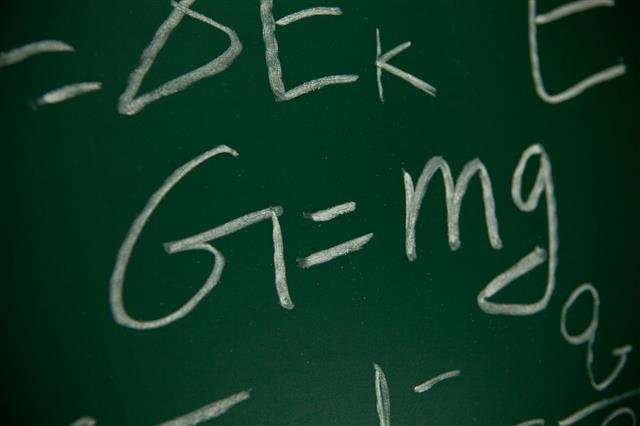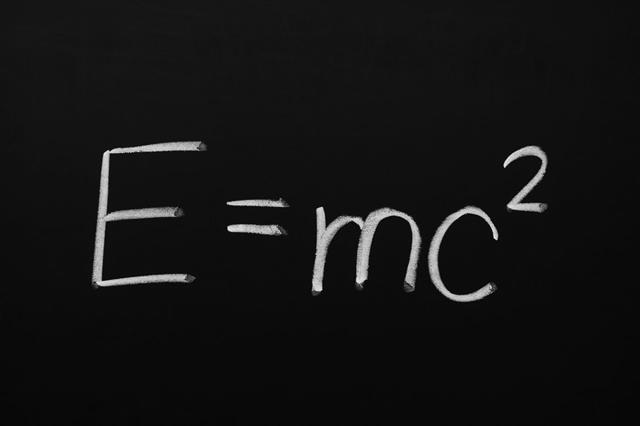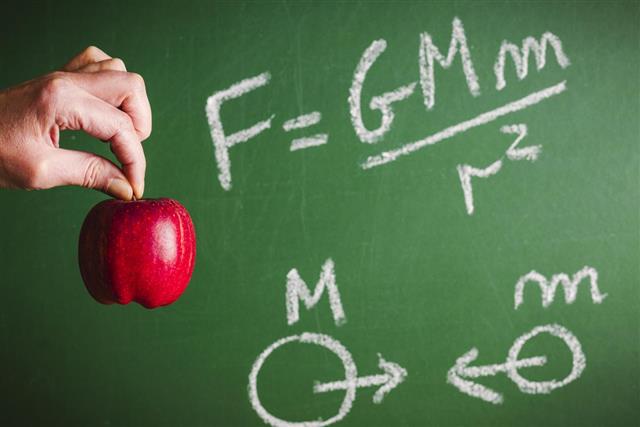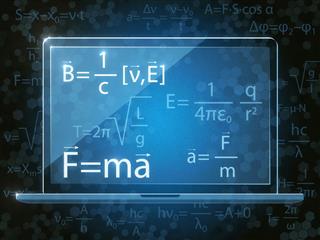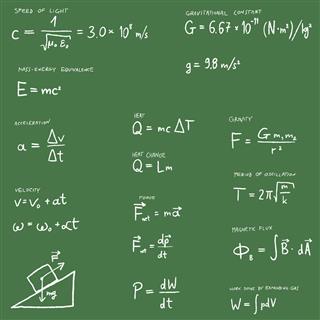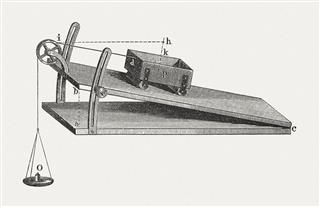
One of the most important scientific breakthroughs of all times is Sir Isaac Newton’s universal law of gravitation, all thanks to the falling apple. Gravity is an invisible force that pulls/attracts all matter towards itself. The fundamental forces of the universe include the electromagnetic, strong nuclear, weak nuclear, and gravitational forces.
Measuring Curvature
The Earth causes space to bend around it, as it moves. Gravity Probe B, a satellite, was launched in 2004 to measure the curvature or warping of space around our planet.
Gravity is the weakest of all and has an unlimited range, but in cases where matter is involved in massive quantities (for example: a black hole), it is the strongest and most dominant one. Gravity is the reason everything gets attracted towards the Earth’s surface, and also for the formation and movement of all the planets and other heavenly bodies.
Ever since it was discovered, the working process of gravity has been explained by numerous theories, which have been explained below.
Newton’s Theory of Gravity

Sir Isaac Newton studied the reason behind the falling apple, and defined it as the law of universal gravitation.
Each particle of matter attracts every other particle with a force, which is directly proportional to the product of their masses, and inversely proportional to the square of the distance between them.
Standard Formula
According to Newton’s theory of gravity
Gravitational force = (G x m1 x m2) / (d2)
where ‘G’ is the gravitational constant, ‘m1’ and ‘m2’ are the masses of the two objects, for which the force has to be calculated, and ‘d’ is the distance between the centers of gravity of both masses.
Let’s consider two objects―the Earth and us. As we move around the Earth’s surface, it pulls us, and we also pull it back. Mass is the amount of matter in any object. Since the Earth’s mass is greater as compared to ours, we get pulled towards the Earth. Besides this, gravity also depends on how far you are from a particular object. This is probably the reason we don’t get pulled towards the Sun, which has more gravity than the Earth.
Zero Gravity
The condition of apparent weightlessness can be defined as the state of a body, wherein it does not experience any effect of mass or weight, i.e., there is an absence of stress and strain on that body. This condition is caused by the resistance of gravitational force on the body, and it’s also called Zero gravity or Free Fall. When a body is acted upon by non-gravitational forces (as in a centrifuge, a spacecraft orbiting the Earth, rockets fired in space, etc.), it’s in a state of zero gravity.
Acceleration
It’s caused due to continuous application of a force on an object. A free falling object has an acceleration of 9.8 m/s2 towards the Earth’s surface. It’s known as the “acceleration due to gravity”, and is denoted by “g”. Galileo’s theory, which stated that all things will fall with the same acceleration in the absence of air, was demonstrated by himself, when he released a ball of wool and a cannonball from the Leaning Tower of Pisa. Both the objects hit the surface at the same time.

Every body continues in its state of rest or of uniform motion in a straight line, unless it is compelled to change that state by external forces impressed upon it.
This is also called the Law of Inertia, and it consists of two points: (i) All objects will only move as long as there is a force behind them; (ii) An object will not change its direction and speed until a force acts on it.

The acceleration produced by a particular force acting on a body is directly proportional to the magnitude of the force, and inversely proportional to the mass of the body.
This law is useful in classical mechanics, and it means that the change in momentum is directly proportional to the applied force. As mass is constant, the force will result in a change of velocity or acceleration. Since acceleration is a vector quantity, it involves magnitude and direction. Hence, for acceleration, a force must be applied to the object.

For every action, there is always opposed an equal reaction; or the mutual actions of two bodies upon each other are always equal, and directed to their contrary parts.
The interactive forces occur in object pairs of the same type and magnitude, in opposite directions, and have different effects. Since action and reaction are exerted on different objects, they don’t cancel each other.
Equivalence Principle
Several researchers including Galileo, Einstein, Eotvos, etc., studied this principle, which states that the acceleration due to gravity imparted on an object is independent of the nature or characteristic features of that body. This principle equates the inertial and gravitational mass of an object. For example, all objects will fall in the same manner and will hit a surface, when the air resistance (or friction of the medium) is negligible or absent.
In other words, if two objects of different masses and compositions are dropped at the same time, they will be attracted by gravity towards the ground at the same rate, regardless of their differing characteristics. Mathematically, the equivalence principle can be represented as:
Inertial Mass x Acceleration = Gravitational Field Intensity x Gravitational Mass
This principle was demonstrated for the first time on the moon by astronaut David Scott of the Apollo 15 mission, when he dropped a hammer and a feather. Due to the absence of air resistance in the Moon’s atmosphere, both objects reached the surface at the same time.
Einstein’s General Theory of Relativity

This theory was developed by Albert Einstein between 1907 and 1915. He explained that gravity is a property of spacetime itself, and it is a force that results from the geometry of spacetime and interaction of matter with space, and vice versa. He developed this theory through a hypothetical experiment that involved the effect of gravity on a free-falling elevator, and then predicted warping and the subsequent attraction of objects with different masses, which was later confirmed experimentally.
The concept of relativity solved several of Newton’s theoretical flaws and became more applicable for modern research. The slight discrepancy in Mercury’s orbit, the apparent bending of light rays due to gravity, several calculations involving astronomical values, etc., are some of the flaws or problems, which can be explained with the help of the general theory of relativity.
Einstein stated that all objects tend to curve or warp the space around them, which leads to the appearance of a 4D space framework. Thus, the spacetime fabric allows the motion of free falling objects around the curved or warped space, along locally straight lines called geodesics. Though the lines are straight, they get curved in a 4D fabric that includes time.

For example, place a heavy iron ball at the center of a trampoline. Now, imagine the trampoline to be the space fabric, and the ball to be a large heavenly body. This body warps and curves the trampoline fabric because of its mass and weight. Now, place a small marble ball on the trampoline surface, and observe as it travels along a curved path, but at the same time, a locally linear path towards the heavier ball. This is exactly how gravity works in the universe according to general theory of relativity. The heavy ball can be considered to be the Sun of our Solar System, and the marble ball as one of the planets. This curving of spacetime allows the revolution of planets in their orbits, the motion of comets and other heavenly bodies, the loss in intensity of light waves as they travel through space, gravitational lensing, gravitational waves, etc.
Supportive Tests
Various tests were performed to validate this theory, mainly for explaining the process of working of gravity. The orbit of planet Mercury shows an anomalous precession of its perihelion position, which indicates that not only does the planet revolve around the Sun, but the orbit too undergoes a revolution, due to the curvature of spacetime under the influence of the Sun’s gravity. Gravitational deflection and delay of light rays also explain the working mechanism of gravity, especially when such rays pass around large heavenly objects like the Sun. In 1959, gravitational redshift was discovered from the Pound-Rebka experiment. This test measures the redshift (low frequency) or blueshift (high frequency) of an object, which follows a path of motion due to gravity. Gravitational waves or radiation have been indirectly studied and confirmed from binary star systems, white dwarfs, neutron stars, black holes, etc.
Equations
Einstein developed a set of simultaneous, non-linear, and differential field equations that explain the relationship between objects and the spacetime fabric curvature. The solutions of these equations are a part of the metric tensor of this fabric. The tensor explains the spacetime geometry, as well as helps in calculation of the geodesic lines of the fabric.
The major solutions have been mentioned below:
• Reissner-Nordström solution
• Schwarzschild solution
• Friedmann-Lemaître-Robertson-Walker solution
• Kerr solution
• Kerr-Newman solution
• Minkowski spacetime solution
Quantum Mechanics and Gravity

One major flaw about quantum mechanics is that it does not count the effect of gravity beyond the Planck constant. Also, as several aspects are still on a theoretical level, this concept is right only if gravity is understood on a subatomic scale.
A German physicist called Max Planck originated the quantum theory, in 1900, while studying the phenomenon of black body radiation. He also presented the idea that energy is composed in the form of small packets called quanta. It explains the working process of gravity on a dominantly microscopic scale, as compared to the theory of relativity. Two major theories that work on similar lines of the unifying quantum field theory (standard model) with gravity are string theory and loop quantum gravity. Attempts have been made to unify all the theories into one single concept known as The Theory of Everything (TOE).
In recent times, attempts have been made to explain the phenomenon of gravitation by the combination several theories, mainly those of Einstein’s theory of relativity and quantum mechanics. On a subatomic scale, gravitons are spin-2 interactive particles, which do not have any mass. These bosons form the crux of this theory and are responsible for imparting the force of gravity to any mass-based object. The source of gravitons is called stress-energy tensors, which induce them to form the force of gravity. As this particle type has still not been discovered, this theory lacks in importance regarding gravity, as much as the previous two theories.

Developed in the 1960s, string theory is a concept that substitutes the subatomic particles by 1D objects called strings, and various quantum states of these strings are used to distinguish between the elementary particles. The strings can vibrate and oscillate in numerous manners, and they are of two types: open and closed strings. The former ones have two separate points, whereas the latter ones are present in a closed loop.

One of the oscillatory modes produces the theoretical subatomic particles called gravitons, which in turn are responsible for the mediation of gravity, at least on a microscopic level. Thus, the string theory always exists in combination with the quantum field mechanics of gravity, and as the strings exist as the sources of these elementary particles, their different modes of vibration, depending upon the mass and frequency, can give rise to numerous types of other subatomic particles.

Another concept that is modeled on quantum mechanics, loop quantum theory results in the formation of a compact and granular structure of the spacetime fabric. Specific operators control the frequency of particular field spectrum. The area and volume parameters of each spacial regions correspond with specific spectra, and they are also quantized with respect to the elementary quanta of spacetime fabric.
Specific mathematical structures called spin networks, along with the geometric aspects of the Ashtekar variables form the geometric framework of gravity at the subatomic level, on par with the Planck’s constant.
Alternative Theories
Mentioned below are some alternative theories based on the working process of the force of gravity:
Superfluid vacuum theory: The basic and fundamental entity of vacuum is regarded as a superfluid (Bose-Einstein condensate), which mediates the working of gravity through space. This fluid is composed of fermion and anti-fermion pairs, which impart a wave function to the medium for the propagation of gravitational waves.
Gravity as an entropic force: This theory consists of an association between gravity and thermodynamics, and states that gravity is purely an entropic force, and does not exist due an interaction between a quantum field and the subatomic particles.
Non-symmetric gravitational theory: It explains gravity on the basis of the flat rotational curves of galaxies, and consists of a symmetric part (gravity) and an antisymmetric part (electromagnetic field). A non-symmetric tensor is an active parameter of this concept.
Induced gravity: On a microscopic level, the Bose-Einstein condensates of gravitational forces are represented as a mean field approximation in association with fluid mechanics.
Self-creation cosmology theory of gravity: This concept states that the Universe has been created from a self-established gravitational field in association with other scalar fields.
Brans-Dicke theory: The gravitational forces are coordinated by tensor and scalar fields of general relativity, and the gravitational constant ‘G’ is not constant. This concept is categorized under scalar-tensor theoretical concepts.
Aristotelian theory of gravity: This concept states that all the elements and entities of the Universe ultimately move towards the geocentric region of the Universe, and all the elements are present in their natural states, forming a shield around the others.
Nördstrom’s theory of gravitation: Also known as the effective theory of gravitation, it states that the effects of gravity totally depend on the geometrical framework of the curved spacetime fabric. This concept was a prelude to Einstein’s general theory of relativity.
Whitehead’s theory of gravitation: Along the geodesic lines, the gravitational waves travel along a flat background, and are controlled by the metric tensor of Minkowski spacetime, and hence, the gravitational potential can be represented by these tensors.
Le Sage’s theory of gravitation: It is a form of a kinetic theory of gravitation. This concept states that all the materialistic objects are hit by tiny microscopic particles (ultra-mundane corpuscles) from all directions. If any two objects cover each other from these particles, a net imbalance results due to their pressure exerted during impact, and both the bodies are attracted towards each other.
The above-mentioned alternative theories do not have much experimental basis, and hence, are not considered extensively. We all know how gravity affects all the materialistic entities in our Universe. Provided below is a bit of extra information about the working mechanism of gravity with regard to plants.
Effect of Gravity on Plants

In 1806, a British physiologist called A. Knight demonstrated through an experiment, the control of gravity on the direction of a plant’s root growth. The term geotropism was first coined by A. B. Franck in 1868. It is a growth movement by a plant in response to gravity.
Positive geotropism is shown by the roots that grow in a downward direction, and negative geotropism is shown by the stem that grows upwards. All other varying directions are called plagiotropic. It is believed that this phenomenon is caused by a plant hormone called Auxins.
Though it is the weakest fundamental force in the Universe, the effects of gravity are felt by all living beings more than the other remaining three forces (electromagnetism, strong nuclear, and weak nuclear). Throughout the last few centuries, numerous scientists, researchers, and physicists have explained the phenomenon of gravitation with as much clarity as possible. Technically speaking, explaining its working at the most fundamental level has not been possible as compared to the other universal forces. Research is still going on to determine the root cause and working mechanism of gravity.
